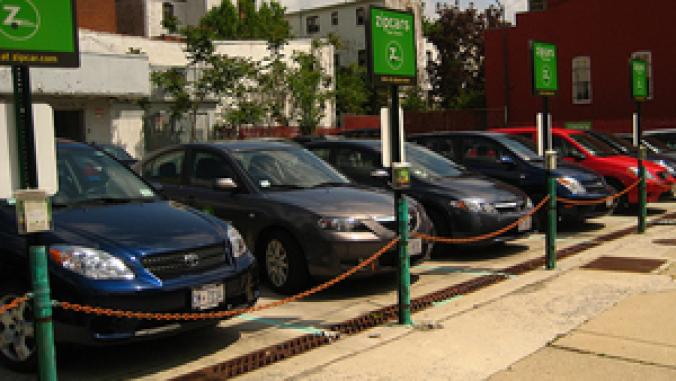Rethinking Green Products by Re-Imagining Your Inputs
<p>The auto industry is in upheaval now trying to radically reinvent our products to meet tough new fuel efficiency standards. But some of the lessons the industry has learned can be applied to any company thinking about sustainability.</p>

One of the most exciting developments in the auto industry today has to do with the sustainable innovations that make cars run -- improved petrol and diesel engines, ethanol and biodiesel, compressed natural gas, electricity, or some combination thereof.
It's a topic that will only become more pronounced as car engines are built to do more with even less, especially with President Obama's recent announcement to green the industry as a whole through aggressive fuel efficiency standards.
This is also a concept that can serve as lessons for those outside of the auto industry. In other words, what can companies do to make their operations more sustainable beyond the end product? Well, a good start would be to look at what is going into those outputs. This trend of replacing traditional materials with sustainable alternatives is something that's emerging across almost all industries, and like car makers, those companies that aren't participating in it are setting themselves up to fall behind.
The good news for those that haven't started yet is, if a 109-year-old car company with one the most expansive and established global supply chains in the world can re-imagine its design process, any company can.
Companies leading the way in such innovations, like Levi's and its new water-efficient manufacturing process used in its Waterless Jeans line, Clorox Company and the reformulated cleaning products that make up its Green Works brand, and Coca-Cola's PlantBottle -- the first ever recyclable PET plastic beverage bottle made partially from plants -- have all reaped the benefits of improved sales and improved reputation through these efforts.
At Ford, we're not just focused on fuel economy numbers alone. We also are re-thinking the way we build cars and the materials used inside of them -- an approach that a lot of business and operations leaders need to start integrating into planning and decision-making processes.
Seats and headliners are now filled with soy-based foam instead of traditional petroleum-based plastics. Old blue jeans are used for carpet insulation. Wheat straw and other plant-reinforced plastic are used for storage bins and door panels. Carpets and fabrics are made from recycled soda pop bottles. And overall, about 95 percent of materials used to make Ford vehicles are recyclable.
The above innovations are examples of the impact that designers, materials procurement specialists, and engineers can have on an industry when they put their minds to it. Also, these examples should serve as a message to senior leadership that their employees should be challenged and encouraged to substitute whatever they can with sustainable alternatives.
There are countless examples of companies re-imagining their design and operations processes, and we as business leaders can ensure that more companies join them.
The next time you're faced with supporting an option between a traditional process and a more sustainable and innovative alternative, know that by making the more eco-friendly choice, you're not only making an immediate impact, you're sending the message that you recognize the importance of environmental considerations in the design process -- from a product's development until the end of its life. And your employees and customers will support you for it.
For more on how companies are making sustainable innovation happen, check out our upcoming GreenBiz Innovation Forum, October 11-13 in San Francisco.
Assembly-line photo by the National Photo Company Collection.





